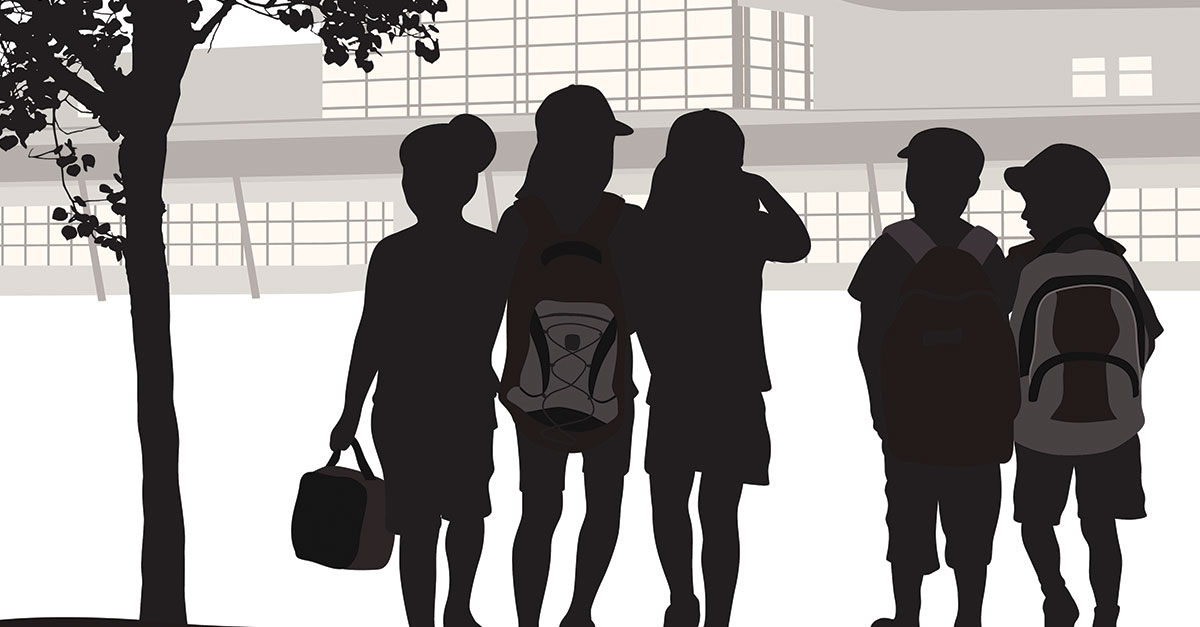Educators know that bullying doesn’t stop at the edge of school property, but supporting students experiencing cyberbullying has proven difficult as much of the harassment takes place outside of school hours and off campus.
A Nov. 8 webinar hosted by the U.S. Department of Education — Promoting Whole Student Health Through Safe Digital Habits — provided information on what cyberbullying and harassment can look like, the prevalence of the problem, and the impacts these experiences have on young people’s physical and mental health. Panelists also gave recommendations for what schools, parents and peers can do to prevent cyberbullying and harassment and support children experiencing it.
Bullying, cyberbullying and online harassment are forms of violence and can be adverse childhood experiences, explained Melissa Mercado-Crespo, lead behavioral scientist at the Division of Violence Prevention at Centers for Disease Control and Prevention’s National Center for Injury Prevention and Control. Whether online or offline, violence exposure can have long-lasting negative health consequences across the lifespan.
“What happens online doesn’t always stay online. Virtual interactions are part of the real world,” Mercado-Crespo said. “Violence that is experienced online is real and can have real impact on individuals mental, emotional and even physical well-being. Furthermore, those online environments can also help facilitate violence that happens offline.”
More than half of teens ages 13–17 reported experiencing some form of online harassment in the past year compared to 36 percent in 2022, according to a 2023 study by the Anti-Defamation League. Of those, 46 percent said the online harassment led to in-person harassment. Increases in experiences of harassment for teens happened across social media and other platforms including Facebook, Instagram, YouTube, WhatsApp and TikTok.
LGBTQ youth, children with disabilities and those who are overweight are at increased risk for bullying victimization, Mercado-Crespo said.
Striking a balance between the good and bad
Tyiesha Short, associate director of science and policy in the Office of the Surgeon General at the U.S. Department of Health and Human Services (HHS), noted that the influence of social media on youth mental health is shaped by myriad factors, including the amount of time spent on the platforms, the type of content they consume or are exposed to, their personal individual strengths and vulnerabilities, and the degree to which it disrupts activities essential for good health, like getting enough sleep.
“Increasingly, we’re seeing evidence that indicates there is also reason to be concerned about the risk of harm that social media youth poses to children and adolescents,” Short said. “I want to also highlight that social media can provide many benefits for some young people, such as by serving as a source of connection and information and support with others who share identities, abilities and interests.”
A majority of adolescents surveyed have reported that despite the issues, social media helps them feel more accepted and receive support during tough times. It also provides a place to show their creative side, stay connected to friends and find social support from peers — something that can be especially important for marginalized youth who may not have those connections in their offline life.
“We know that strategies and approaches for protecting children and adolescents from potential negative impacts of online environments such as harassment, and at the same time supporting access to obtaining the potential benefits, is complex and multi-dimensional,” Short said. “Some opportunities for schools and educators include teaching kids about responsible online behavior and modeling that behavior, supporting the implementation and evaluation of digital literacy curricula and reporting problematic content and activity that you see young people experiencing.”
Resources
The below resources are just a small sample of those shared during webinar. A recording and all resources provided can be found here.
- Surgeon General Issues New Advisory About Effects Social Media Use Has on Youth Mental Health, HHS
- Center of Excellence on Social Media and Youth Mental Health, American Academy of Pediatrics
- Creating a Positive Foundation for Greater Civility in Online Spaces, Boston Children’s Digital Wellness Lab
- Teaching Digital Well-Being: Evidence-Based Resources to Help Youth Thrive, Center for Digital Thriving
- Cyberbullying: Identification, Prevention and Response, 2023 Edition, Cyberbullying Research Center
- Digital Citizenship Curriculum, Common Sense Media, Curriculum
CSBA also has a research and policy governance brief available that including definitions, statistics, information on the impacts of bullying and cyberbullying, signs of being bullied or bullying, how local educational agencies can help students and families, examples of LEAs’ bullying prevention communication, sample questions for board members and relevant guidance and resources. Find that and related resources here.





